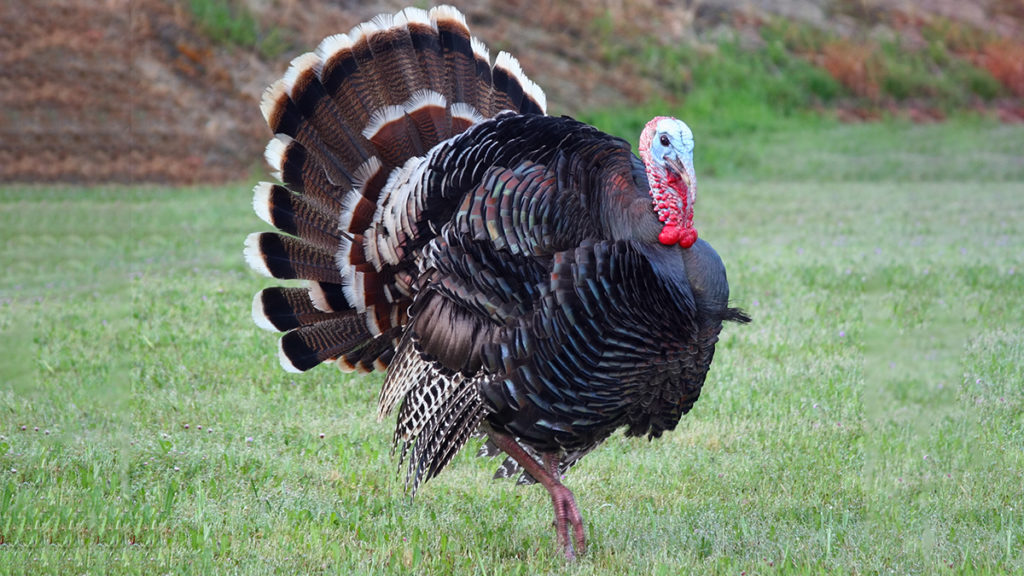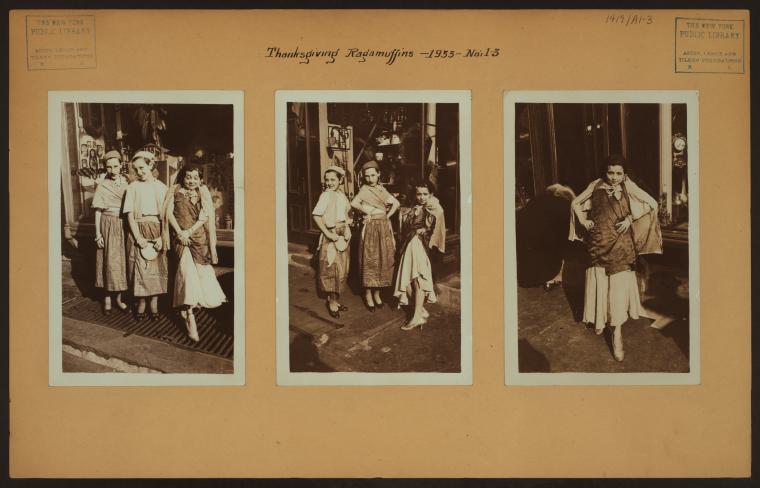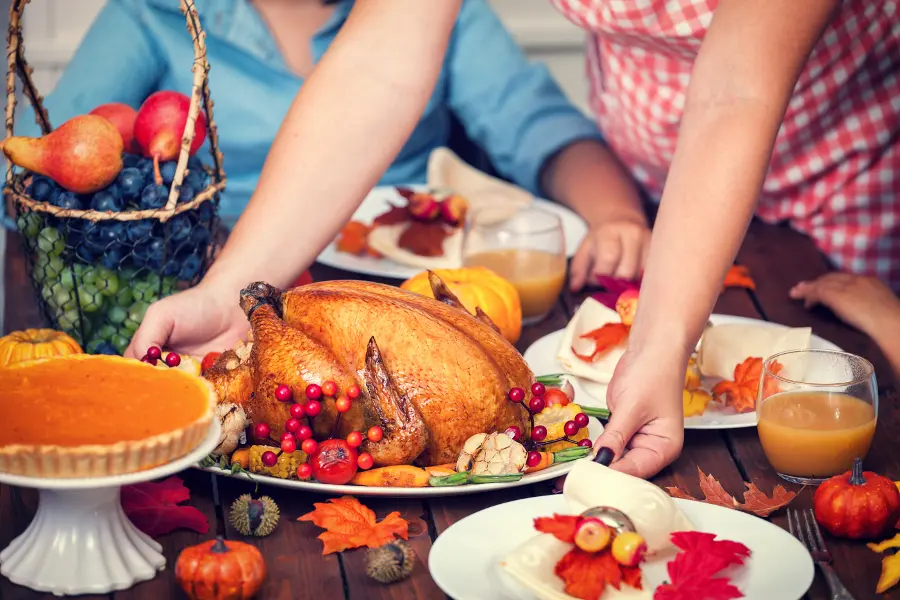There’s more to major holidays than just a day off from work. Our series “Holidays 101″shares how these festive days came to be, the foods associated with them, and the peculiar ways to celebrate. Here are five facts about Thanksgiving you may not have known.
1. Snoods of the chicken-peacock
Meleagris gallopavo — the latter part of which roughly translates to “chicken-peacock” — is the American wild turkey’s zoological name. According to linguist Mario Pei, the name “turkey” likely originated from Europeans new to North America mistaking the fowl for a species that Turkish merchants had sold overseas. Male turkeys were eventually deemed “gobblers,” based on the sound of their mating call to “hens,” or female turkeys.

Wild turkeys have faces that are distinct, colorful, and — let’s face it — a bit unsightly. The fleshy red strand that hangs above a turkey’s bill is called a snood. While both sexes have these appendages, the Journal of Avian Biology found that gobblers with longer snoods are not only healthier in general but more desirable to hens, and likely to beat short-snooded gobblers in mating challenges. Guess size does matter.
Well-built turkeys have some famous admirers as well. According to Smithsonian, Benjamin Franklin, while helping determine our national symbol, called a bald eagle a less “respectable bird” than a turkey.
2. Trick-or-treat’s-giving
Halloween wasn’t always America’s candy-seeking holiday. In late November 1897, the Los Angeles Times first wrote of children dressed as wild animals and politicians roaming the streets on Thanksgiving soliciting sweets and coins from strangers. The practice grew and spread east, and by 1909 The New York Tribune reported swarms of kids doing the same while dressed in “old clothes, many sizes too large.” That earned Thanksgiving the nickname “Ragamuffin Day.”

By 1911, the New York tradition had become a full, chaotic parade. The Free Lance-Star reported thousands of costumed young people (as well as adults) sounding horns and rattles, “throwing confetti and even flour on pedestrians” who ignored their requests for handouts. Manhattan’s wild Ragamuffin Parade was gradually swallowed up by an organized street spectacle, the Macy’s Thanksgiving Day Parade, as well as the rise of Halloween trick-or-treating tradition.
3. Macy’s parade balloons: the weird and the wonderful
Though the first three years of the Macy’s Thanksgiving Day Parade (1924-1926) featured live exotic animals such as tigers, bears, and elephants, none ever managed to entrance young attendees like the parade’s legendary balloons.
The tradition began in 1927 with a two-story high inflatable Felix the Cat that took nearly a half hour to inflate with almost 2,000 cubic feet of helium and air — the equivalent of 5,000 standard-size “birthday balloons.”
A grand start, but nothing compared to the parade’s largest-ever balloon, a Superman figure in 1940 almost 5 ½ stories tall by 44 feet wide, which held enough air for 22,500 birthday balloons.
The parade’s strangest floaters include a Pinocchio balloon in 1937 with a nose much larger than its body, and an inflatable version of entertainer Eddie Cantor in 1934, the only real-life human to ever be featured. Mr. Cantor’s balloon wore a baffled facial expression, had legs each wider than its torso, and instead of being flown for a Macy’s balloon’s standard of three years, was recycled after the parade into 650 pounds of rubber that the U.S. military used for WWII supplies. As a co-founder of the March of Dimes, Cantor did deserve his balloon though, and the crazy eyes made sense: He was nicknamed “Banjo Eyes” from constantly widening and rolling his eyes during performances.
4. “Franksgiving”: FDR’s marketing holiday
To express his gratitude for the Union Army victory at Gettysburg, President Abraham Lincoln declared Thanksgiving an official national holiday in 1863, to be celebrated on the last Thursday in November. Sixteen presidents later, President Franklin D. Roosevelt — in an effort to stimulate a struggling U.S. economy in a year when Thanksgiving fell on the last day of the month — suddenly kicked off the 1939 holiday shopping season a week early, officially changing the date of Thanksgiving to the second-to-last Thursday in November.
FDR’s decree came just at the end of October, however, and the timing of the announcement made the president no friends: Sixteen states outright refused to acknowledge the order, thousands of angry citizens wrote the White House to complain about “Franksgiving,” and NFL executives, whose Thanksgiving Day games were scheduled well in advance, were equally furious. A Gallup poll the following year showed 62% of the country opposed the move.
5. The truth about turkey naps

For generations, millions of Americans (many of them dads and uncles) could be found zonked out on their family couches shortly after Thanksgiving dinner. Holiday legend says it’s because of all the turkey they ate — specifically, the excessive amounts of tryptophan, an amino acid that spurs the production of the sleep-inducing hormone melatonin, found in the poultry.
Not true, says Dawn Jackson Blatner, a registered dietician nutritionist and former spokesperson for the American Dietetic Association. Jackson Blatner says that chicken actually contains more tryptophan than turkey, and that the common post-meal snooze-fest simply “boils down to Thanksgiving being a time when people overeat.”
She elaborates: “When people overeat food, the digestion process takes a lot of energy. Don’t incriminate the turkey that you ate, incriminate the three plates of food that you piled high.”








Comments are closed.